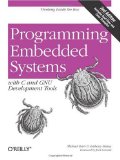You may want to install Samba/CIFS in a Linux host to share files with other Windows computer or to use as a media server with a networked media player. If samba is missing, install it in the host machine (foomachine):
|
1 |
sudo yum install samba |
Create a new smb user:
|
1 |
/sbin/smbpasswd -a foouser |
Start / check status / restart samba service:
|
1 |
/etc/rc.d/init.d/smb start / status / restart |
To make samba service run automatically at startup:
|
1 |
/sbin/chkconfig smb on |
Type \\foomachine\foouser in Windows Explorer and type the username foouser and the password to access your Linux files. To add other directories to share with samba, edit /etc/samba/smb.conf Resource: http://www.cpqlinux.com/samba.html Jean-Luc Aufranc (CNXSoft)Jean-Luc started CNX Software in 2010 as a part-time endeavor, before quitting his job as a software engineering manager, and starting to write daily news, and reviews full time later in 2011. www.cnx-software.com



